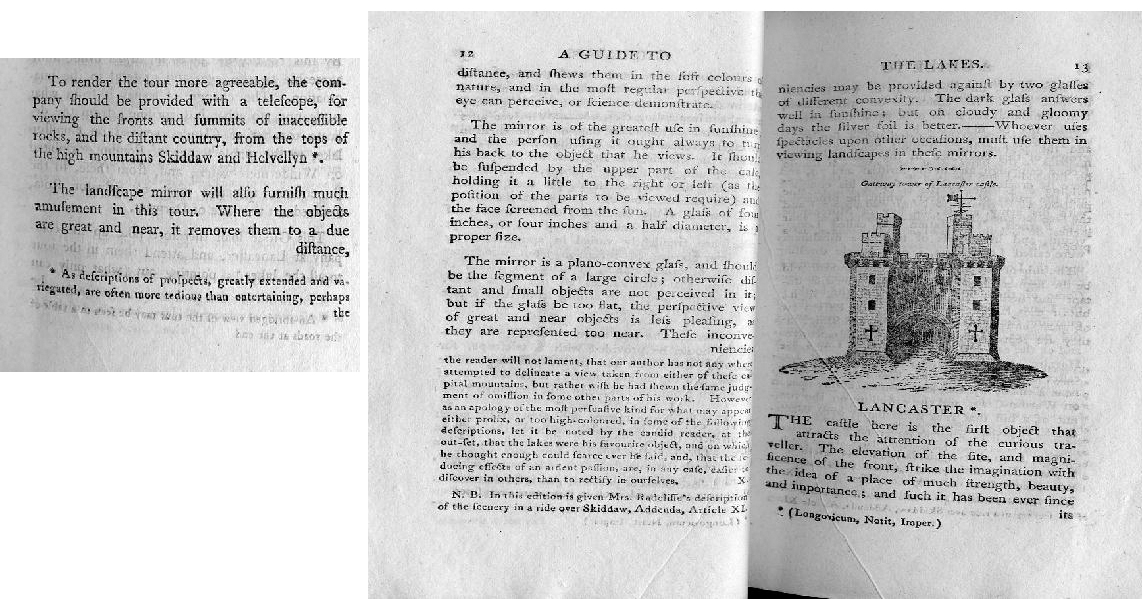Claude Glass background General

The Guide to the Lakes (1778) thought the best way of looking at scenery was by viewing it through a mirror called a Claude Glass
Thomas West’s Guide to the Lakes (1778) recommended that visitors should go to special view-points which he identified in his book – and should stand there with their backs to the view, looking instead at its reflection in a small black convex mirror called a Claude Glass. Held at arms-length, and above the head, the Glass had the effect of softening the colours and flattening the tones, so making the image look more like a painting – especially when looking at a sun-set. Or the mirror could be held so as to include the viewer in the scene, in an eighteenth-century version of the Selfie. (In the above photo, of the Coniston Fells viewed from Barker Scar, above the Leven Estuary, the camera lens can be seen, reflected in the mirror)
West's own description can be found on pages 11-13 of the 1796 edition of the Guide

Some aquatint images and engravings from West’s Guides to the Lakes can be viewed here
Text, photo and home-made Claude Glass by Bill Shannon

